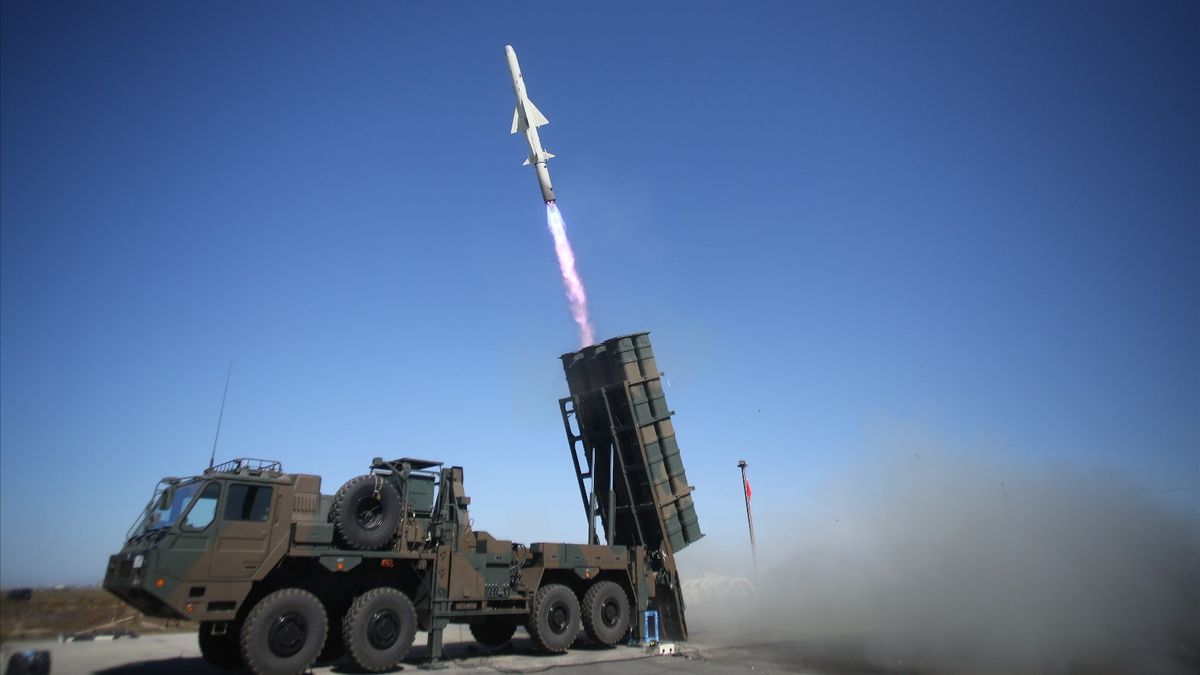JAKARTA - Japan will develop and mass-produce high-speed cruise missiles and ballistic missiles, to have the ability to strike further targets, as part of a military expansion aimed at dealing with threats from China and Russia.
The procurement plan disclosed in the Ministry of Defense's annual budget request is a clear deviation of the decades-long range imposed on Japan's constitutionally restricted Self-Defense Forces, meaning they can only fire missiles with a range of a few hundred kilometers.
"China continues to threaten to use force to unilaterally change the status quo and deepen its alliance with Russia," the ministry said in a budget request.
"It also puts pressure around Taiwan with military exercises that should and should not abandon the use of military forces, as a way to unite Taiwan with the rest of China," the ministry continued.
Concerns about China's regional ambitions grew this month, after the country fired five ballistic missiles into waters less than 160 km (100 miles) from Japan during a demonstration after US House Speaker Nancy Pelosi visited Taiwan.
In addition to Russia and China, the ministry also referred to North Korea as a threat to Japan.
The budget demand is for funding to mass-produce ground-launched cruise missiles, a long-range version of the Mitsubishi Heavy Industries-designed Type 12 missile, to attack ships.
And the new high-speed ballistic missile, with the capability to hit targets on the mainland. The ministry is also looking for money to develop other projectiles, including the Ministry's hypersonic warhead, did not provide a range for proposed weapons, or said how much was planned to deploy.
However, they will likely be able to achieve targets in mainland China, if deployed along Japan's nearby southwestern Okinawa island chain.
Japan has ordered missiles launched from the air, including the Joint Strike Missile (JSM) made by Kongsberg Norway, and the Joint Air-to-Surface Stand-Off Missile (JASM) Lockheed Martin Corp with a range of up to 1,000 km (620 miles).
Unlike ship or ground launchers, however, the number that can be fired is limited by how many aircraft can be placed in the air to fire it.
The ministry asked for an increase of 3.6 percent in spending to 5.6 trillion yen (39.78 billion US dollars) for the year that started on April 1, but said the figure would increase after calculating the cost of the new procurement program.
Prime Minister Fumio Kishida's government will agree to the growing demand by the end of the year, when it will also unveil a major defense strategy reshuffle and plans for a new medium-term military build-up.
PM Kishida, who described security in East Asia as "roof" after Russia's invasion of Ukraine, has pledged to "substantially" increase defense spending to prepare Japan for a regional conflict.
The ruling Liberal Democratic Party in the high house election manifesto in July pledged to double defense spending to 2 percent of gross domestic product for five years.
That would make Japan the third-largest military shopper in the world behind major US allies and neighboring China.
In addition to increasing missile and other ammunition supplies, the Japanese military wants to develop cyber defenses, electromagnetic warfare capabilities, and space presence.
The English, Chinese, Japanese, Arabic, and French versions are automatically generated by the AI. So there may still be inaccuracies in translating, please always see Indonesian as our main language. (system supported by DigitalSiber.id)












